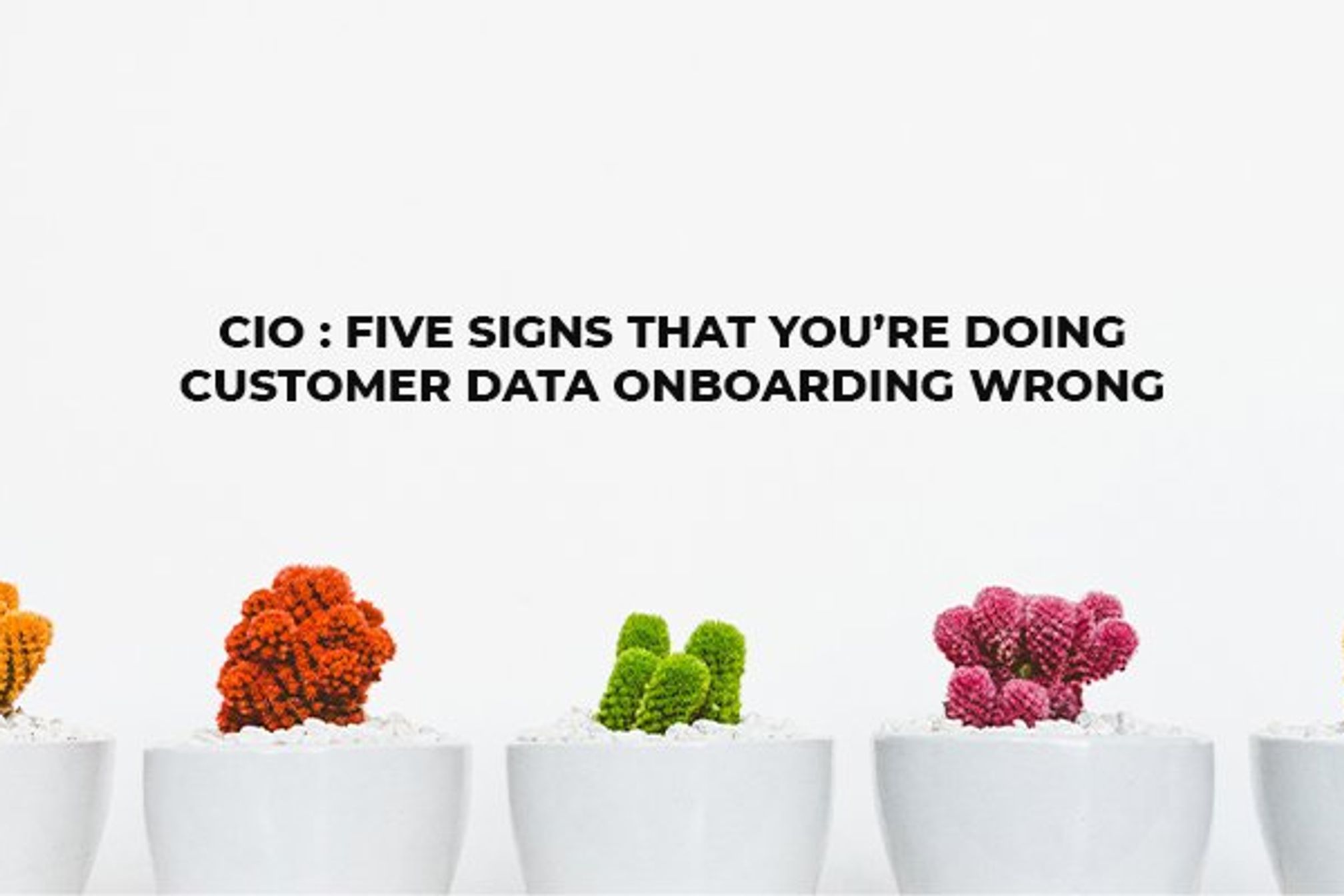In earlier blog post, customer data onboarding was described as an automated, recurring data exchange of information for a company with its business ecosystem of customers, partners, suppliers and vendors. In another post, key factors that make customer data onboarding a hard and challenging problem were discussed. In this article, we will discuss the key signs that should inform the CIO, IT leadership and Line of Business (LoB) managers that they are onboarding customer data in the wrong way.
At Adeptia, with years of experience in developing industry-leading data integration software and deploying it for hundreds of companies to solve their business-to-business integration needs, we have spotted 5 signs that identify an outdated approach for addressing customer data onboarding use cases.
1. If it takes too long to set up data flows with customers, then you are doing it wrong.
This is the most significant and easy-to-spot sign that a company’s approach to customer data onboarding is all wrong. This is so because many distinct inefficiencies combine together to increase the time and effort that is spent on the tasks of setting up data flows with customers and partners. Gartnerhas conducted a survey of hundreds of companies regarding how long it takes them (on average) to set up data connectivity and integration and found it to be 8-12 weeks. That is a whopping 2-3 months. If it takes multiple weeks to a few months, that is too long. Ideally, setting up data exchanges with customers should not take more than a few days. In some cases, it could be driven down into mere minutes.
2. If there is no central dashboard to manage and track data exchanges, then you are doing it wrong.
Since the business ecosystem of external customers and partners may range from scores to hundreds or thousands of organizations, it is quite important to have the ability to monitor and track data flows from a single pane of glass: a consolidated dashboard. It also helps improve customer service to search and quickly find and drill-down into individual data flows for a specific customer or partner and identify issues. However, most companies do not have this capability as they set up data integrations in an ad-hoc manner over long period of time and exchange data using multiple different channels ranging from file transfers, APIs, message queues, manual file uploads, to email attachments. With these numerous differing underlying technologies, a single and centralized overarching dashboard view is missing.
3. If your IT developers often set up customer data flows, then you are doing it wrong.
Customer data onboarding as implemented in a wrong way is an engineering heavy task and so it requires extensive training and knowledge of data integration technology. That means that IT teams are tasked with setting up of these data flows. For this, they use typical data integration tools that are designed to create internal integrations between a handful of applications or aggregating data for analytics and not implement and manage thousands of data exchanges with external entities. This places a significant burden on already overextended IT teams. Ideally, customer data onboarding should be performed by business and operational teams working in collaboration with external customer users, but without requiring scarce IT integration experts.
4. If each customer data flow is handled in a one-off way with little reuse, then you are doing it wrong.
Due to varying technical capabilities on the part of external customers and partners, there is typically a wide variety of channels, formats, and protocols that are used to create data exchanges with these organizations. This makes setup of data flows often as one-off affairs, reducing the possibility of reusing data mappings, artifacts and objects from one customer to another. This increases the effort needed to configure new data flows. Ideally, a company should have a library of a standard set of templates and artifacts such as data mappings, schemas etc. that may be re-used for similar data flows with certain common categories of customers and partners.
5. If there are no error notifications and fixing errors takes too long, then you are doing it wrong.
Exchanging data with an external organization is often problematic as it is difficult to know when or why a discrepancy has occurred , which directly impacts customer experience and customer satisfaction. There is also difficulty associated with tracking errors, troubleshooting unexpected issues, and identifying fixes related to day-to-day problems in the running of data flows. There are too many moving parts to easily identify the source of problems because the issues may occur on the external side or in-transit or the internal company side. Ideally, error notifications should be sent to appropriate users immediately with useful information to enable rectification before the customer is even impacted.
Conclusion
Customer data onboarding is a challenging problem in itself and it is especially difficult to do it right if a company is relying on old technologies, tools and approaches. Adeptia Connectis a self-service business application that provides a modern approach for customer data onboarding. It enables IT teams focus on high-value tasks related to security, governance and compliance, while enabling business users to perform the day-to-day operational tasks related to configuring, managing, and monitoring data exchanges with customers and partners.

